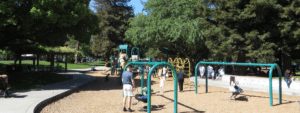By Roland Li
Sprawl could replace up to 293,100 acres of Bay Area green space over the next 30 years, according to a new report from the Greenbelt Alliance, a local land conservation and planning nonprofit.
The amount of land likely to be developed was slightly lower than in the group’s previous report in 2012. Jeremy Madsen, CEO of the Greenbelt Alliance, credits this reduction to a shift towards more support for infill and transit-oriented projects, which he said preserves open space and promotes use of public transit, rather than cars. But inadequate planning for housing near jobs and transit will still push development into areas that would be better left undeveloped.
The greatest concentration of green land was in Contra Costa County, which had 62,000 acres that could be developed. Solano and Santa Clara counties also had a large portion of land.
“We’re very lucky as a region that we have this incredible network of open space that does so much for us,” said Madsen, citing its agriculture uses, clean water and scenery. “We still have some major threats to this open space network. The best way to deal with this threat is to do development in the right way.”
Recent ballot measures have promoted more density in urban areas, which most planners support as more environmentally friendly. However, housing battles are common in urban areas and suburbs alike when neighbors oppose taller buildings. Urban areas also tend to be more expensive than suburbs. The skyrocketing costs of housing in urban and suburban areas has pushed development to outer cities and regions.
Madsen cites Fruitvale Transit Village and redevelopment of Oakland’s Broadway-Valdez district as examples of smart development. In contrast, he opposes project proposals to build on green space in Tassajara Valley and Morgan Hill’s annexation request.
“I think what people are excited about is the opportunity to live close to BART, be able to walk outside your front door and have a lively neighborhood in front,” he said. “Keep our cities and towns great places. Don’t build the monotonous tract housing of a generation ago.”
To read more, visit http://bit.ly/2konP6Z.
This article was originally published by the San Francisco Business Times.




